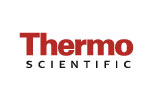October 2017 - Chasing Greenhouse Gases at our Doorstep: Isotopes as a Tool to identify Urban Carbon Dioxide Sources
Understanding and accurately measuring urban carbon dioxide (CO2) emissions is critically important as countries and cities worldwide take steps to reduce the greenhouse gases that are affecting our climate.
Felix Vogel from the Laboratoire des Sciences du Climat et de l’Environnement (LSCE/IPSL) at the CEA-CNRS-UVSQ University in Saclay, France, is one of the leading scientists developing and applying techniques for monitoring greenhouse gases. Vogel and his team make us of the isotope fingerprinting technique. The ratio of 12C and 13C isotopes in carbon dioxide vary by source and as such can distinguish between CO2 coming from biomass or fossil fuel burning.
In order to quantify the impact of different CO2 sources in the city center of Paris, his team conducted continuous measurements of CO2 and its isotopologues O13CO and 18OCO using Thermo Scientific™ Delta Ray IRIS on the roof of the University of Pierre and Marie Curie in the heart of Paris. The Delta Ray is a field deployable laser based Isotope Ratio Infrared Spectrometer operating in the mid-infrared. It allows scientists to continuously monitor CO2 concentration and its 13C and 18O composition directly at ambient concentrations at up to 1 Hz with precisions better than 0.05‰. The findings of this study were published in our Application Note AN30384.
LCGC sat down with him and discussed the experimental setup used by his group as well as the efforts to establish a global network for monitoring greenhouse gas emissions. A podcast of this interview is available here.
Find out more about this topic in the Knowledge Base.

